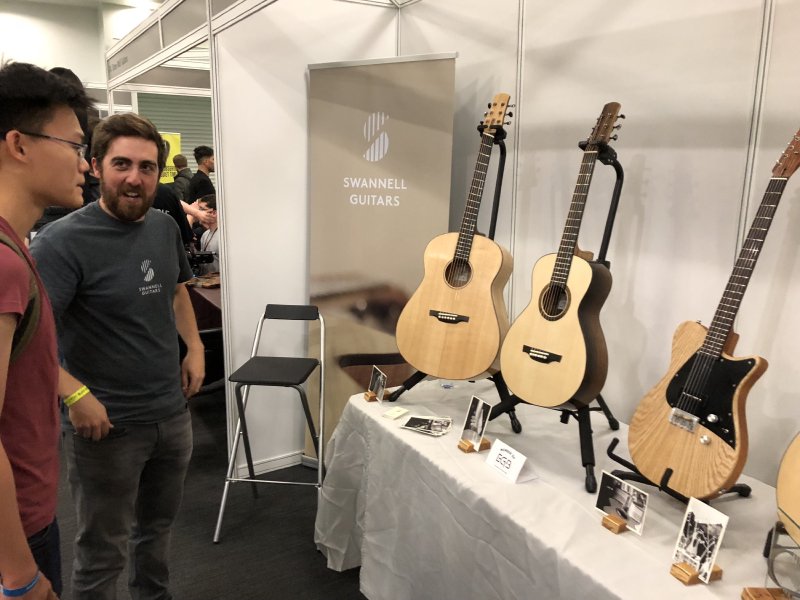A week in the shop
1 Oct 2018
This week my first goal was to glue up the fretboard for the commissioned offset to its respective neck, but I wanted to avoid the issue I’d had when I’d done the same bit on the recovery offset guitar that is also being worked on. If you look back at my notes from that week, I had the issue that although the fretboard seemed to dry clamp to the neck fine, after I added glue the join between the fretboard and the neck didn’t close as well as I’d expected, and I had to fill the resulting seam with glue so there wasn’t a gap along the join. This worked and doesn’t look too bad (and indeed, I think with a contrasting fretboard wouldn’t really be visible), but it was stressful to deal with, and I ended up with a lot of excess glue to get rid of which also was extra unnecessary work.
Having reflected on what I did that time versus what I’ve done in the past, I observed that in I’ve clamped an extra bit of wood on top of the fretboard when gluing it, to spread the pressure from the clamps more evenly over the fretboard. However, because with these latest fretboards I’ve radiused them before gluing, that wasn’t possible, as there is not flat surface to have the extra bit of wood sit on. So, I decided before gluing this latest fretboard onto the neck I’d make some radiused clamp blocks to solve this.
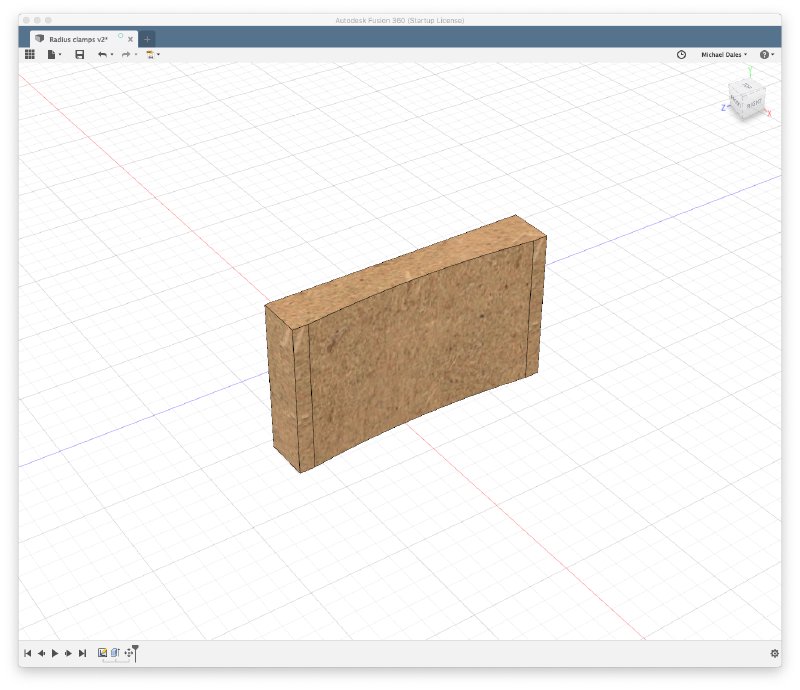
To do this I simply modelled up a block with a concaved surface on once side to match the fretboard radius, and flat on the other side to camp onto, which I then machined out of some left over swamp ash I had from a previous guitar build.
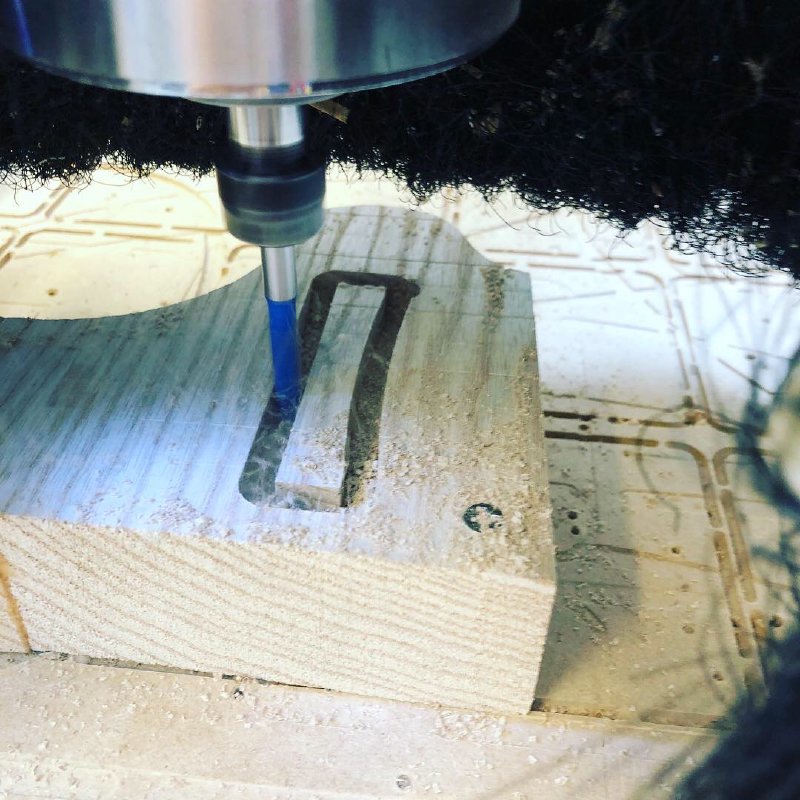
Once cut out, I then laser etched a description of the radius on the back of them, as I suspect over time I’ll end up with a series of these for different fretboard radiuses, and I’m not that good at eyeballing subtle curve radiuses :)
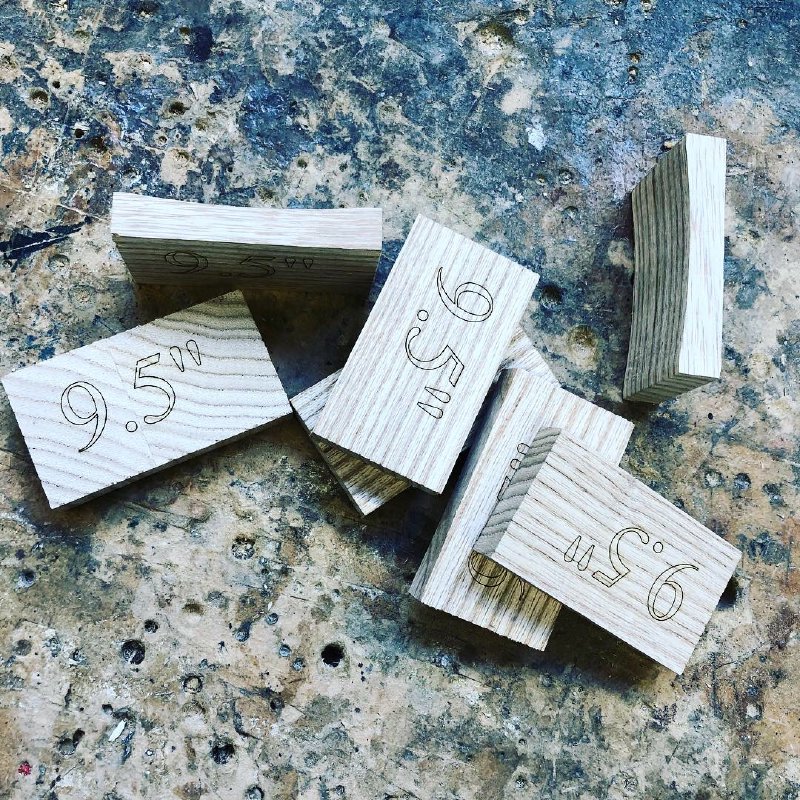
Blocks made, I then put them to immediate use, gluing the wenge fretboard to the birds-eye maple neck for the commission offset.
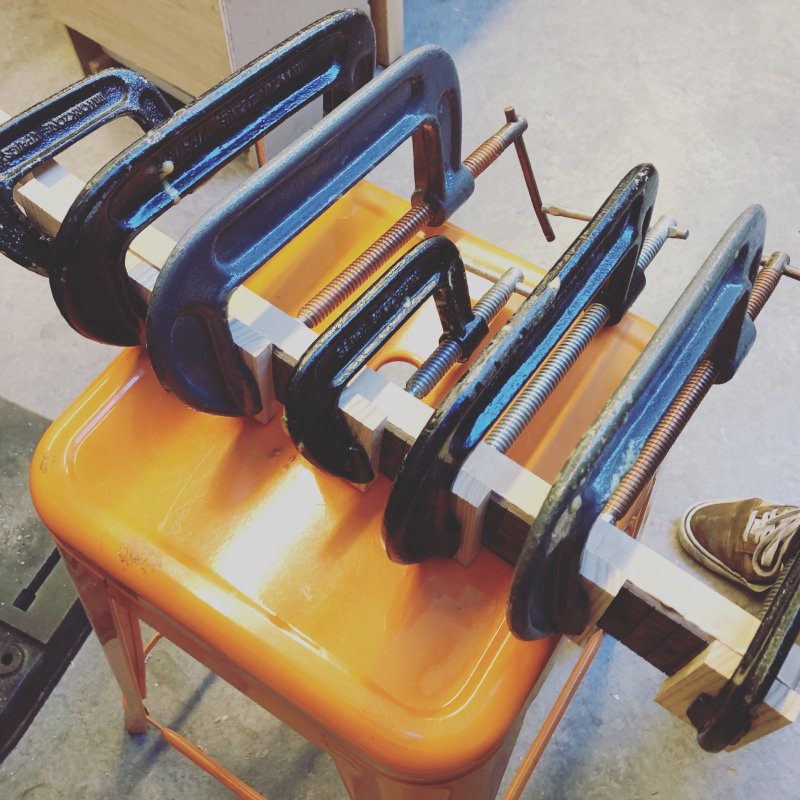
The blocks worked a treat: they spread the load from the clamp across the width of the fretboard nicely so that the edges were just as tightly clamped down as the centre. As a result I had a good tight join between the fretboard and the neck when I removed the clamps. Success!
If you’d like your own set of blocks like this, then I’ve added the Fusion 360 design to my open source page so you can use that if you have your own CNC router, or if you’d like me to make you a set for a given radius give me a shout: I’ll send you 10 blocks of the same radius for £25 plus postage.
Having glued the fretboard on, I’ve since tided the neck up with hand router using a following bit to trim the fretboard to be perfectly flush with the neck, and I’ve started cutting the fret slots.
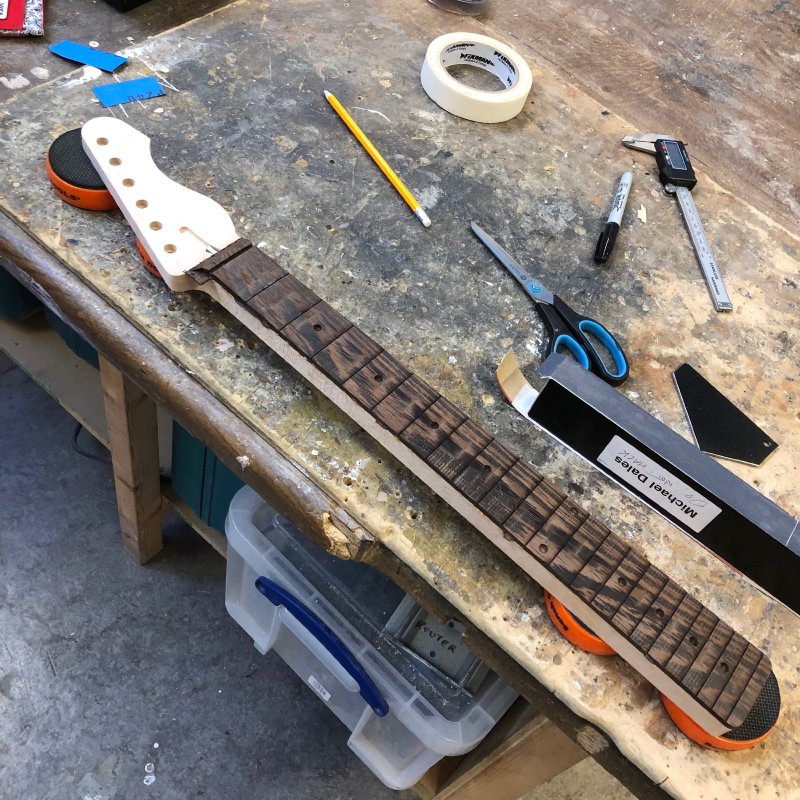
Whilst wenge is lovely once finished, cutting the slots is a lot more demanding than it is on something like rosewood or maple. The two coloured woods have quite different toughnesses, so you’ll find your saw blade will be stuck one moment and then running smoothly the next, and if you’re not careful with how much pressure you apply you can end up with the blade jumping out the slot and cutting wood where you’d rather it didn’t. Even though I give myself a head start by laser etching a guide slot on the surface of the wood, it’s still slow work and not something it’s worth trying to rush given the cost of mistakes!
I also made a start on the fretwork for the other offset I’m working on which is slightly ahead in the pipeline.
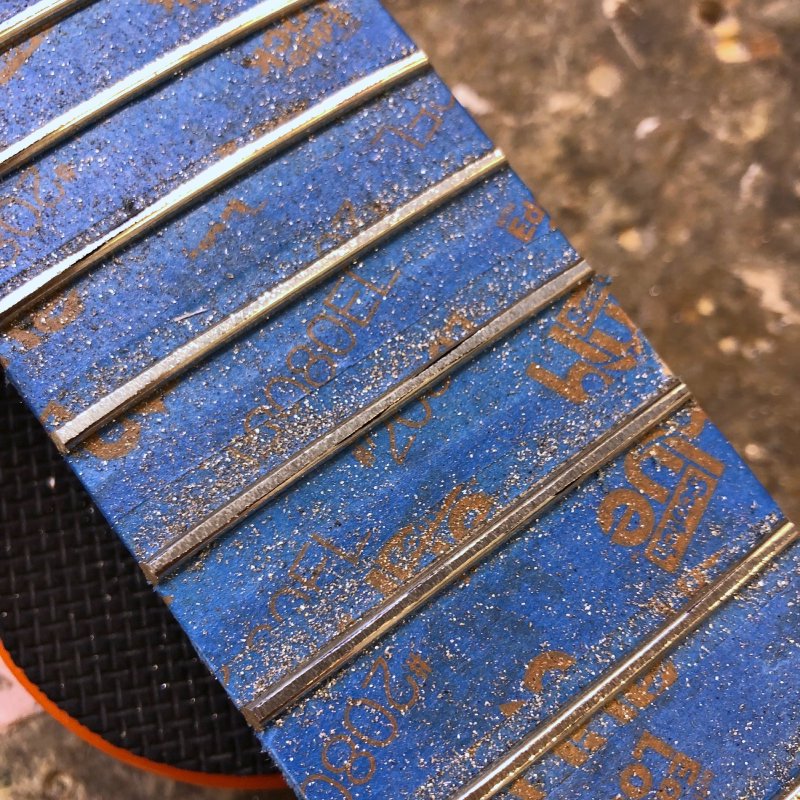
As I said I would last week, following on from attending the Festival of Maintenance, I created a page describing the setup and repair work on existing guitars I’m happy to take on and guide prices for that work. If you’re in Cambridge and would like me to give your guitar a bit of TLC then get in touch!
Looking to the future, I’ve also been doing a little more design work in spare moments on my own designs. Whilst it’s been fun building models based on existing guitars, it has always been the aim one day to have my own designs so the reflect both a mix of my own preferences and those of the people who commission them. To help me visualise those designs, I 3D printed some scaled down mockups to help me get a sense of how the designs are physically, rather than just on screen.
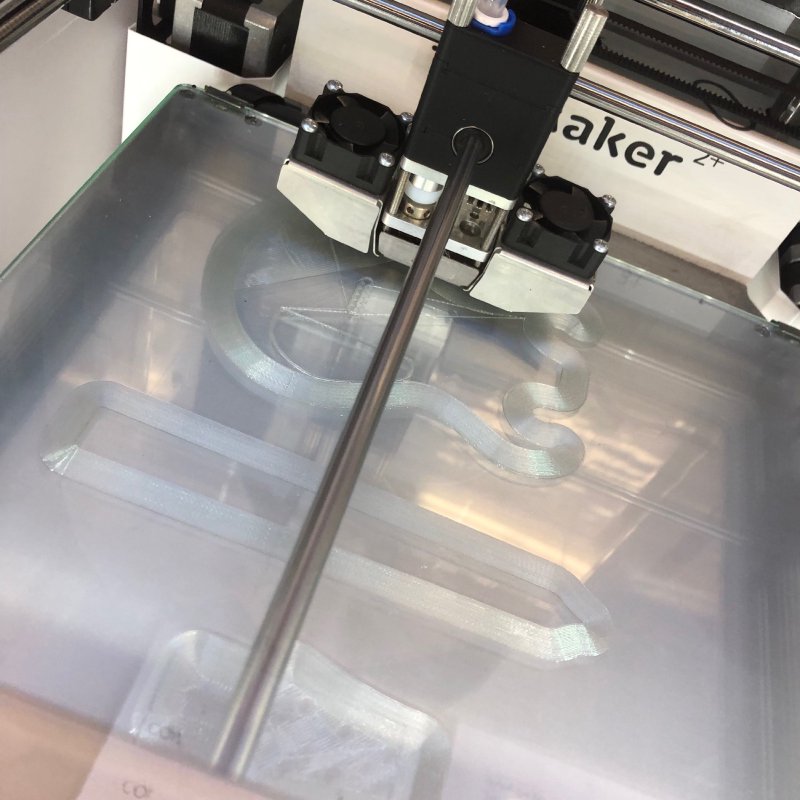
First up, it’s quite amazing how small a quarter scale guitar feels. I guess it’s 1/16th by volume, but they really do feel quite tiny. If there’s a market for guitars for dolls and action figures then I guess I’m ready to corner it :)
That aside, it really was useful having the scale model to get a better sense of how your design looks in reality. This even applies to other guitars that I’ve seen in screen or in pictures: I saw the St Vincent guitar at the weekend up close, and in person it looks very different from how it does in pictures, with the angles being more more striking that it appears on screen or page. The same was true of the curves on my initial prototype here, some of which worked better than I expected and some worse. But the nice thing about using a 3D printer to make the mockups rather than carving them in wood is that it was then but a few hours after I updated my design before I had the next prototype printed and in my hands for evaluation.
It helps that I have someone lined up for the first one of these (a baritone version no less) once I’ve cleared the current backlog with the offsets I’m building, and we’ve been exchanging ideas for the looks and features of that guitar to make it match their tastes, and it helps me evaluate the flexibility of having a guitar design that I can tweak to be flexible enough to meet different needs.
At the end of the week it was nice to head over to the UK Guitar Show being held at London Olympia.
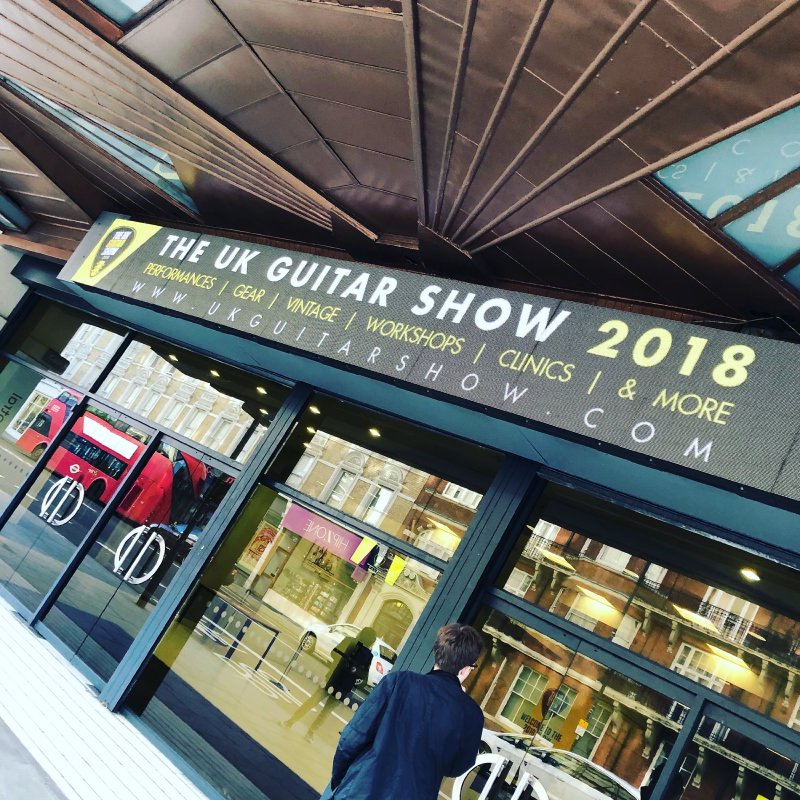
The show was quite a bit bigger than the other shows I’ve been to in the last year, with more mainstream brands being on display and less of the independent guitar builds and sellers. Whilst I do enjoy seeing the smaller builders (and there were some of those here), it meant overall I felt less bad about having a go on everything even though I didn’t intend to buy; at the smaller shows I’d feel bad about wasting someone’s time.
Some random highlights:
- I got to hold a St Vincent guitar, though not play as the Music Man stand didn’t have an amp. It is even more lovely in the flesh than in pictures. The sad thing I noted is that there is no left hand version. I’m not a left handed player myself, but I know a few people who are, one of whom would have liked this, but alas that’s ruled out for them, which was sad.
- I had a go on the Fender player series Strat and Tele on their stands. Nothing remarkable about these, other than to congratulate Fender for having a left handed guitar up front and centre on their stand ready for people to play.
- I had a go of a Line 6 Variax guitar plugged into a Line 6 Helix effects board, and my mind was blown by the flexibility of this combo. The Variax works like a standard guitar, but you can switch it into a mode where it ignores the pickups and just runs a microphone under the bridge into a DSP unit that can then emulate all different types of guitars: strats, teles, Les Pauls, and even acoustics. It also lets you change tuning without adjusting the strings whilst in this mode. At the turn of a single control you can do from standard tuning to drop-D, to Eb, to DADGAD. Switching between tunings is always a pain, so that’s quite a game changer. When plugged into the Helix you can then adjust each tuning (e.g., drop the high E as well as the low E when in drop-D). It was hard to tell how good the sound was given the general cacophony of the show floor, but it was certainly a fun ten minutes I had messing around with this.
- I tried the Vox Starsteam guitar, which like the Variax is meant to emulate a large range of different guitars, and has quite a nice unique design. It was a bit of a let down for two reasons: firstly, the stand had no batteries so all of the fancy features didn’t work, nicely highlighting the downside of fancy digital electronics in your guitar, and secondly whilst I love the looks of the Starstream, it isn’t that comfortable if you play it sat down, with the edge digging into you. It’s clearly designed to be played stood up, but there wasn’t a strap on the guitar. All in all, a bit of a let down, but still I find the general ideal inspirational.
- I bumped into Jamie of Swannell Guitars, a Cambridge maker of amazing acoustic guitars. Jamie let me have a little jam on his first electric guitar, which was fun to play, and quite interesting as you could feel the acoustic heritage in the otherwise familiar shape of an electric guitar - I hope to catch up with him in the near future and find out more about his design.
